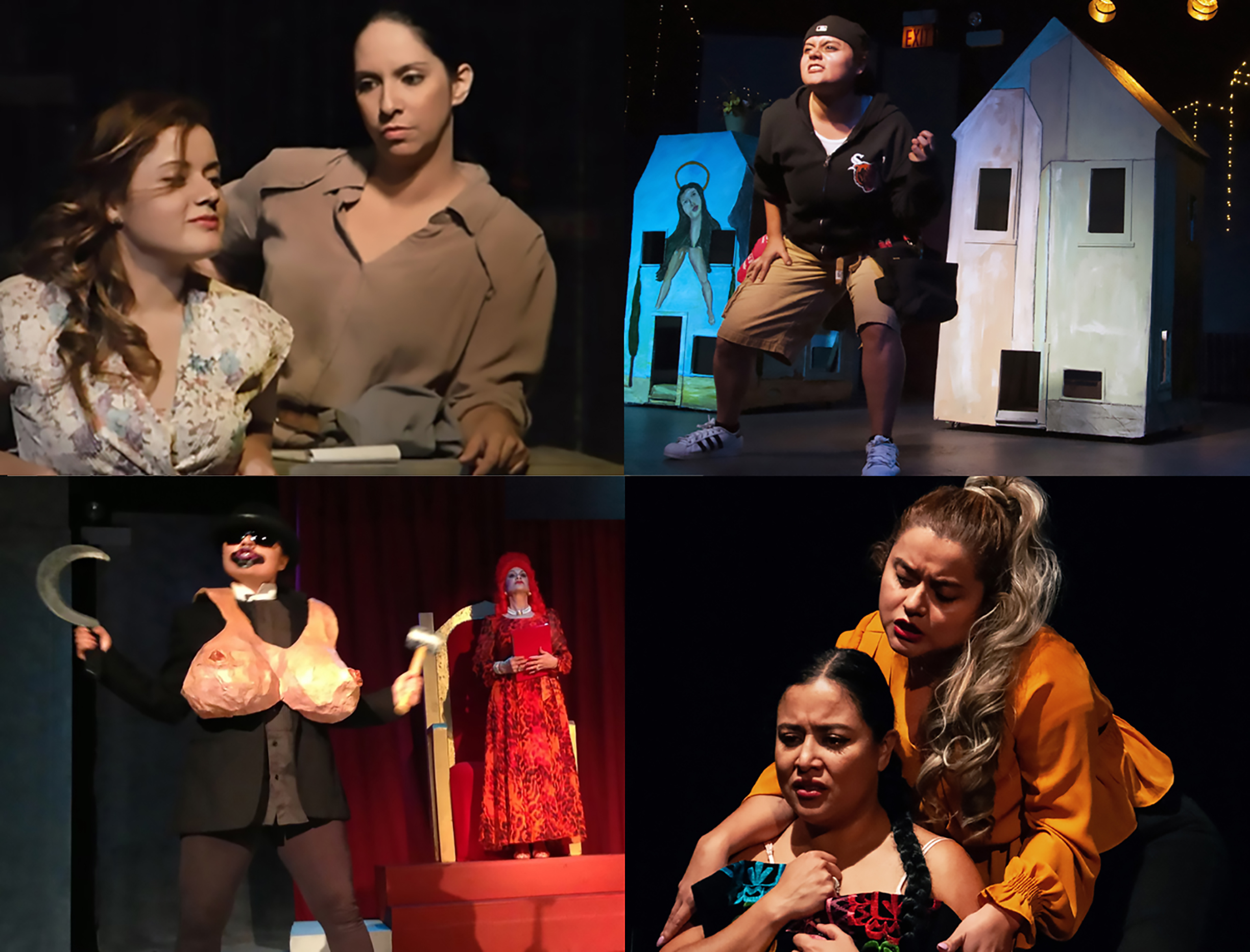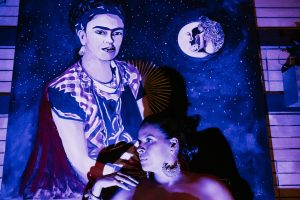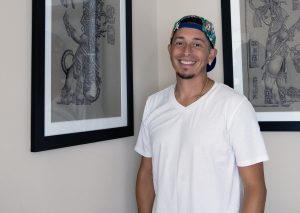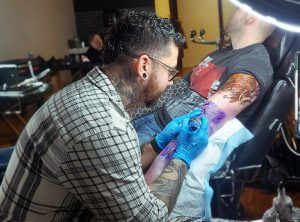STEFANIE JARA | THE ACTRESS & DESIGNER. Ecuadorian actress transfers her performance skills and embarks on a long-desired goal.
STEFANIE JARA ESCOBAR, 30, has always loved the arts. She studied acting at the Instituto Superior de Televisión in Guayaquil, Ecuador, where she was born. After graduating at 21, she moved to Chicago. She is currently an ensemble member of Aguijón Theater Co. Her passion is theater, but she also teaches Spanish and is working toward a bachelor’s degree in interior architecture.
Did you come to the U.S. to visit or did you plan to find a job here?
The main reason was to have a better future and find more opportunities. My mother is an American resident and asked me to come. When I found AguijónTheater, I knew that was what I was looking for. Now Aguijón is my family in Chicago.
Who inspired you to go into theater?
My family. My father’s side are all artists. [He’s] always in touch with his artsy side. For a New Year’s tradition my dad would make this detailed doll and on New Year’s Eve he would burn it. It takes months of work. It’s an art form in Ecuador. They are so beautiful that it makes me not want to burn it.
When did you realize you wanted to be an artist?
I was always an artistic kid but never imagined that it would turn into my career. An art career is usually frowned upon by your family. In Ecuador, acting is limited; there wouldn’t be a lot of options to study acting in universities. In my last year of high school, I devoted myself completely [to acting]. But my family would always give excuses as to why I shouldn’t do that or why they wouldn’t pay for it. I saw this [attending college] as my chance to study something that I like. I studied acting there for four years. I graduated, and then I came here [to the United States]. And I’ve been with Aguijón Theater ever since.

What are your other jobs?
I’m also a Spanish teacher. I like to teach through art. I would draw a house with a red roof and show it to the class, asking, “What is this [in Spanish]?” Art helps [me] to do that. It’s cool to teach and to share your language and what you know with people. The kids like it and they learn fast.
How do you describe yourself and your culture?
I define myself as an Ecuadorian Latina. I am Mestiza. In Ecuador, everyone is Mestizo. There’s a lot of mix in my family. I come from the coast [Guayaquil] but my grandparents live in the mountains in the city of Cuenca. I have family in Quito too, so there are many mixes.
Describe your training as an actor.
I have learned acting in theater and television. They’re very different. [Acting] in television [is quick] because time is money. I prefer theater because it’s live, only once. If you mess up, you messed up. Once it’s done, it’s done, unlike cinema or television.
You are now studying interior architecture?
My mom worked for over 20 years as a librarian at the University of Guayaquil School of Architecture. There were a lot of books on architecture and interior design that I read as a child. It inspired me. I decided that eventually I would study that.
How has Chicago affected you?
It is very diverse with a lot of cultures. You get to know so many people from many other backgrounds. You learn a little bit from everyone, and you take it with you. I came here with zero English skills. I had to learn the language. Even though it was a bit hard, I kept learning. It’s now been nine years and I’m finishing my second associate degree to continue with a bachelor’s in interior architecture.
Aguijón Theater uses subtitles to share plays with everyone, right? How do they make it more accessible?
They specialize in plays in Spanish, but they use subtitles in English to help break that [language] barrier and bring that rich Latino culture [to the United States]. Once you begin reading the subtitles, you get sucked into the story. Not just Latinos but everyone. It’s a beautiful thing to share it with people from other cultures. Everyone is invited.
What is lacking in the art world and how does your art address its shortcomings?
Art is subjective. You want to experience it with compassion and love. You share it and people take it the way they understand it. One person won’t like it while another one does. What’s most important to focus on is knowing that you did your best and that you gave your all.
What are the challenges you have faced while practicing your art?
The first challenge was the language. It makes you despair because you don’t know how to express yourself. There are so many things that you want to do. I don’t know if I see it as an impediment anymore. I don’t have a lot of extra time since I’m studying so much and working at the same time. All my work is in English, but I feel more confident in Spanish.
“Art is subjective. You share it and people take it the way they understand it.”
How do you feel about the word Latinx?
I was confused because I didn’t understand it at first. For me it feels very new. It’s important because I respect inclusion and it depends on how the person feels whether they use the word Latino, Latina or Latinx. That’s the nice thing about art because it doesn’t have a gender. It’s for everyone. It doesn’t have a race or sex.
Who is your target audience? How do you want people to see and understand your art?
I do theater, painting, and interior design for everyone to enjoy them. I do everything with discipline and dedication because I love it and I want to share it with the world. The understanding depends on the person who’s viewing my art because it’s subjective. If you stop because of a comment someone makes saying it’s not good enough, you’re not going to do it right. Create it with commitment, respect and love.
How do you share your art — do you use social media?
Yes. I share on social media. I have Facebook and Instagram. If I have a painting, I put it on my stories, or theater pictures when I have an event. I share my work with everyone.
What types of plays have you been in?
I’ve done both dramas and comedies. My first one in Chicago was “La Chunga” by Mario Vargas Llosa where I played Meche, the girl everyone wanted. “Casa Propia” (A House of Her Own) is a dramatic comedy. “Adverses” was a fun play with an exaggerated performance direction. You get into character, things come out and you’re surprised by it.
When I am not performing, I work as an assistant stage manager, also operating lights and sound. I want to eventually do set design, blending architecture with theater.







Be First to Comment